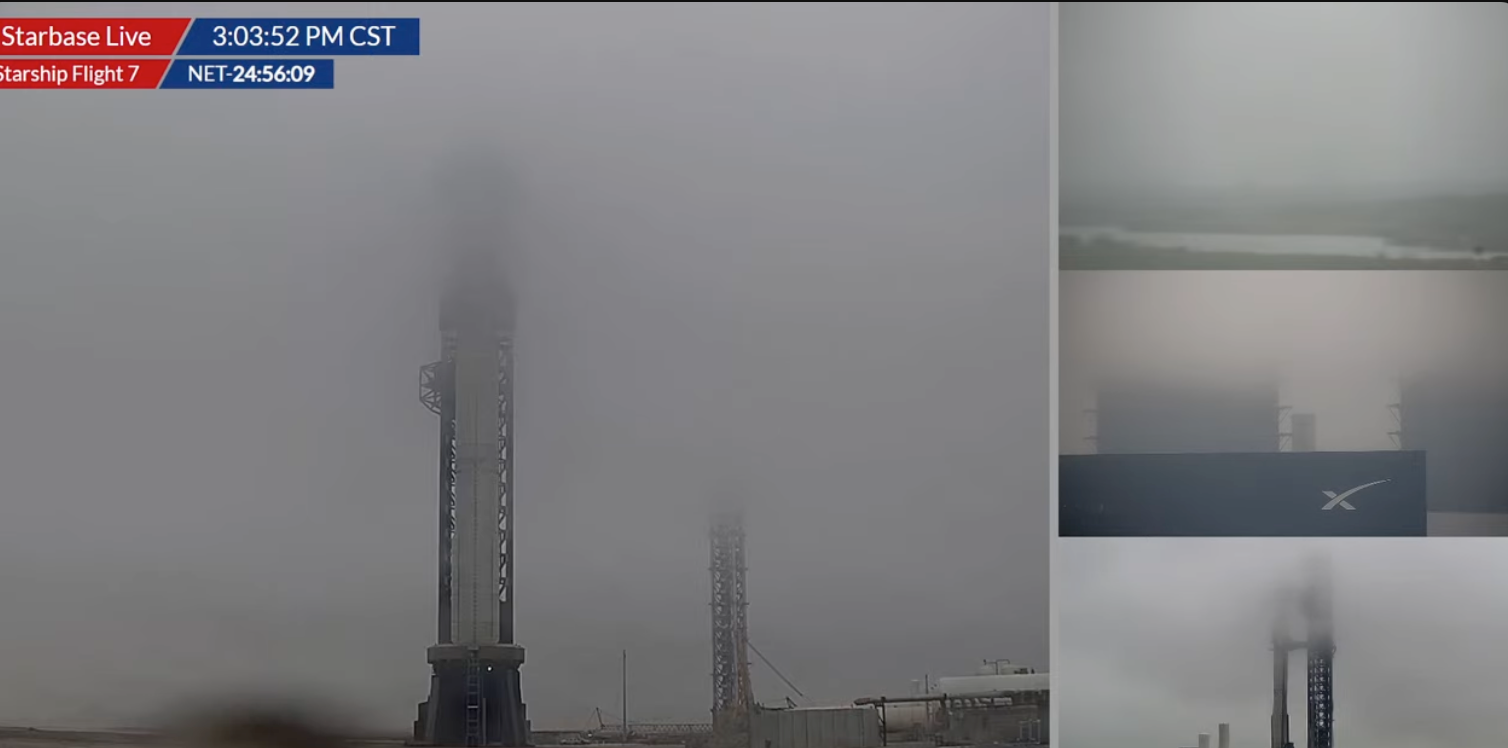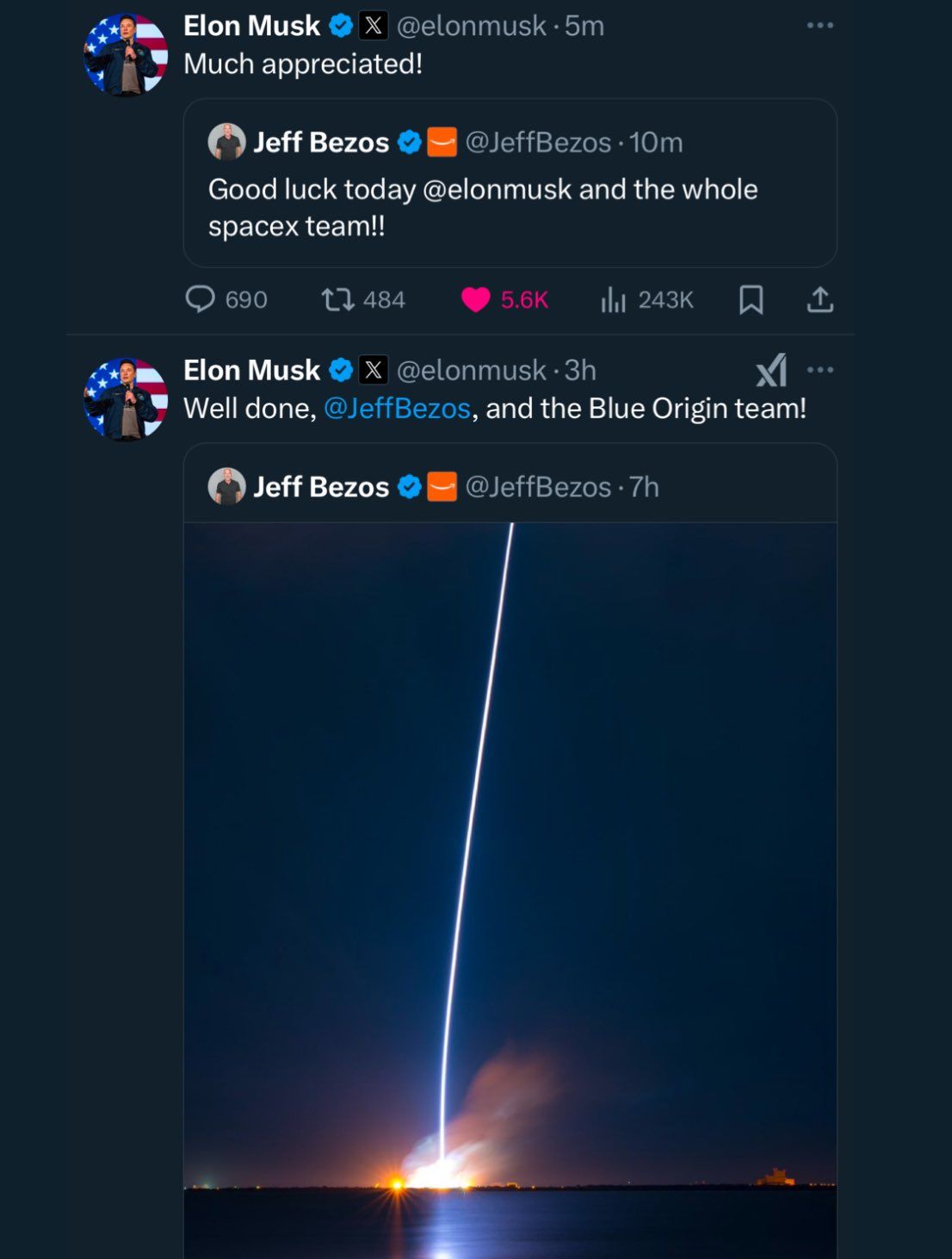New Glenn
-
I’ve mentioned the Blue Origin (Jeff Bezos) rocket New Glenn a few times and also saw some of it up close when I was in Florida but why not start a new thread. It’s basically between the Falcon 9 and the Starship. Supposed to launch (and land at a sea based ship) at 1am eastern tonight. My guess is they’ll get delayed yet again but who knows.
My main gripe is for the first launch, why is it in the darkness of night?? I know there are limited launch windows; but just like Artemis 1, launched at night, I feel like that’s bad for the audience as well as test observations! Oh well.
-
I’ve mentioned the Blue Origin (Jeff Bezos) rocket New Glenn a few times and also saw some of it up close when I was in Florida but why not start a new thread. It’s basically between the Falcon 9 and the Starship. Supposed to launch (and land at a sea based ship) at 1am eastern tonight. My guess is they’ll get delayed yet again but who knows.
My main gripe is for the first launch, why is it in the darkness of night?? I know there are limited launch windows; but just like Artemis 1, launched at night, I feel like that’s bad for the audience as well as test observations! Oh well.
-
why do Blue Origin and SpaceX launch at night sometimes?
-
Orbital Mechanics
• Timing to Reach Specific Orbits:
• To align with specific orbital requirements, such as launching a satellite into a particular orbit, the rocket must launch at a precise time when the Earth’s rotation aligns the launch site with the desired trajectory.
• For instance, satellites heading to geostationary orbits often require nighttime launches due to their alignment with Earth’s equator. -
Weather Conditions
• Favorable Conditions:
• Some weather patterns, such as calmer winds in the upper atmosphere, are more predictable or favorable at night.
• Nighttime launches can also avoid heat-related atmospheric turbulence in certain regions. -
Scientific Objectives
• Astronomical Research:
• Space telescopes or missions studying celestial objects may require launches during specific windows that match the timing of their observational goals.
• Infrared Observations:
• Some payloads, like infrared telescopes, are sensitive to heat and light, making night launches advantageous for reducing interference. -
Scheduling and Range Availability
• Launch Windows:
• Launches must coordinate with busy schedules at spaceports and with airspace and maritime traffic. This can lead to nighttime slots.
• International Coordination:
• For missions requiring coordination with international partners, the timing may align with their operational schedules, which could result in nighttime launches. -
Payload and Mission Requirements
• Military Satellites:
• Some classified military payloads, which SpaceX occasionally launches, may require nighttime launches for operational secrecy.
• Direct-to-Geostationary Missions:
• Rockets carrying satellites directly to geostationary transfer orbits often launch at night due to orbital mechanics. -
Public and Technical Benefits
• Spectacle:
• Night launches provide a visually stunning display, with the rocket’s flames and exhaust illuminating the night sky, which can increase public interest.
• Telemetry and Tracking:
• Darkness can enhance visual tracking and reduce interference from sunlight when observing rocket trajectories.
-
-
When we first moved to the space coast in 1977, our family would drive out to the beach to watch launches. The first few were at night. The very first one actually blew up, and it took us a while to figure out that something abnormal happened.
These were all satellite launches under the radar of the national news. At that time there were launches every 3-4 weeks, sometimes more often.
The local paper had a little ‘Next launch’ section in the top left corner of the first page, where you might have seen the local weather in another paper.
-
When we first moved to the space coast in 1977, our family would drive out to the beach to watch launches. The first few were at night. The very first one actually blew up, and it took us a while to figure out that something abnormal happened.
These were all satellite launches under the radar of the national news. At that time there were launches every 3-4 weeks, sometimes more often.
The local paper had a little ‘Next launch’ section in the top left corner of the first page, where you might have seen the local weather in another paper.
-
New Glenn still on schedule for 1am tonight. Starship moved from this afternoon to tomorrow afternoon due to weather.
-
New Glenn launched early this morning, see video below. Feed starts about half way through. Cool video of their rockets at 40 seconds into the flight.
It looked slow getting off the launch pad. So I compared it to the MUCH heavier, MUCH taller Starship 6 (admittedly it has more rocket engines, too).
At 0:15 into the flight, New Glenn 50mph, Starship 134mph.
At 0:30 into the flight, New Glenn 100mph, Starship 323mph.
At 1:00 into the flight, New Glenn 340mph, Starship 707mph.
Also at 1:00, New Glenn was 12,000 feet high, Starship was at 30,000 feet high.
So I guess you could say Starship is about 2.5x "faster", which is remarkable given how much taller and heavier it is.
-
-
T - 44 minutes.
Link to video -
About 30 minutes late according to this

